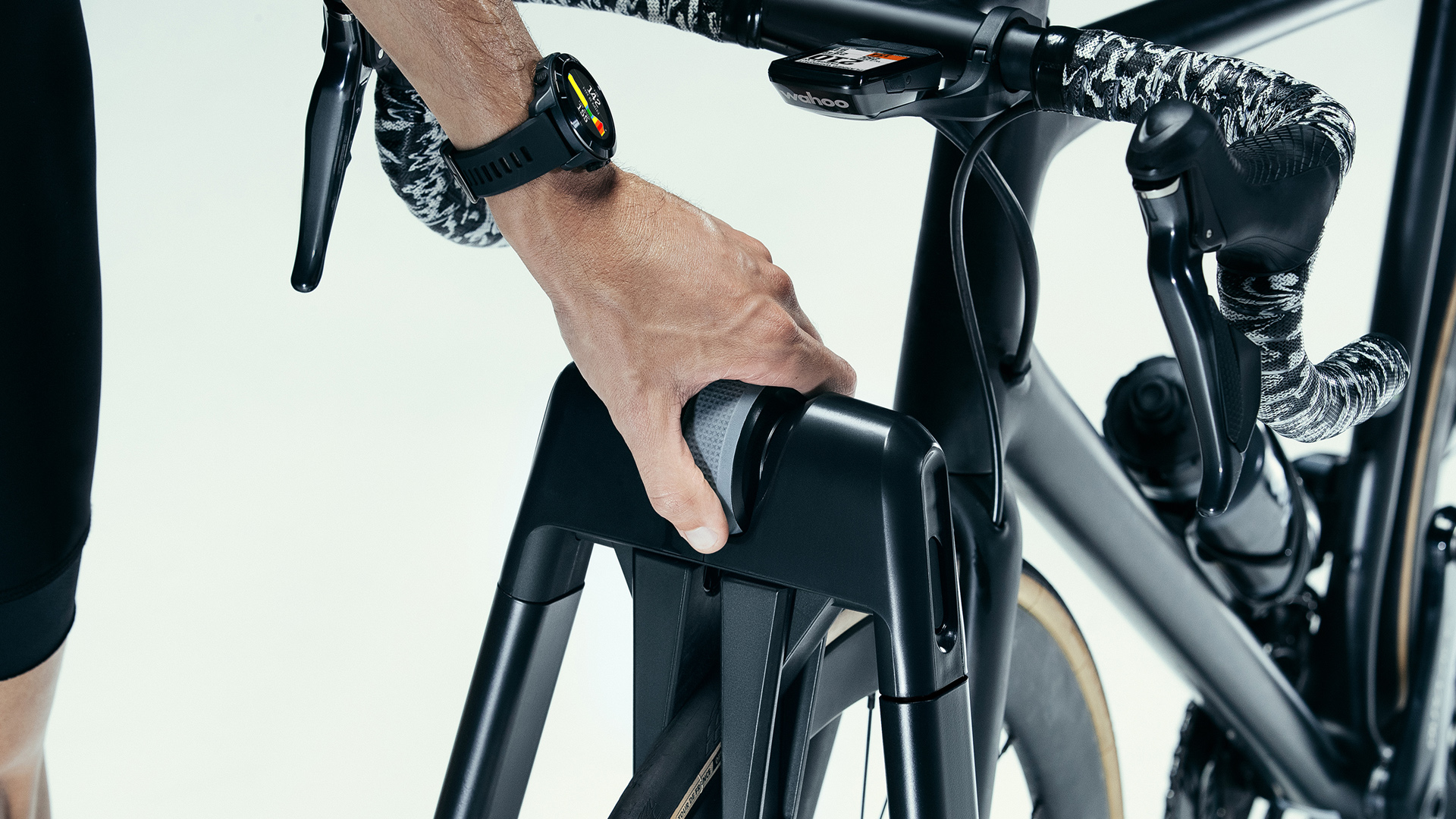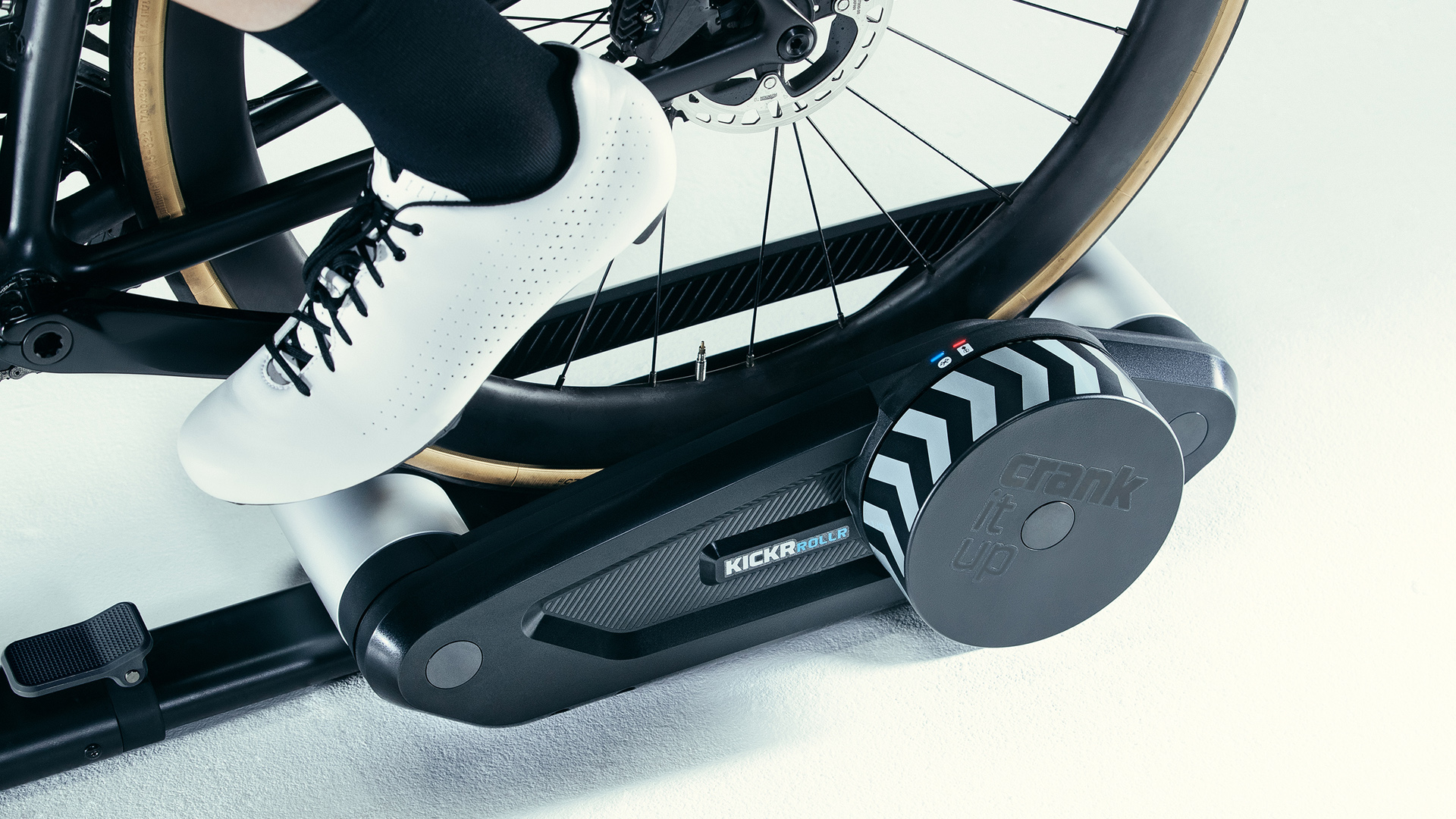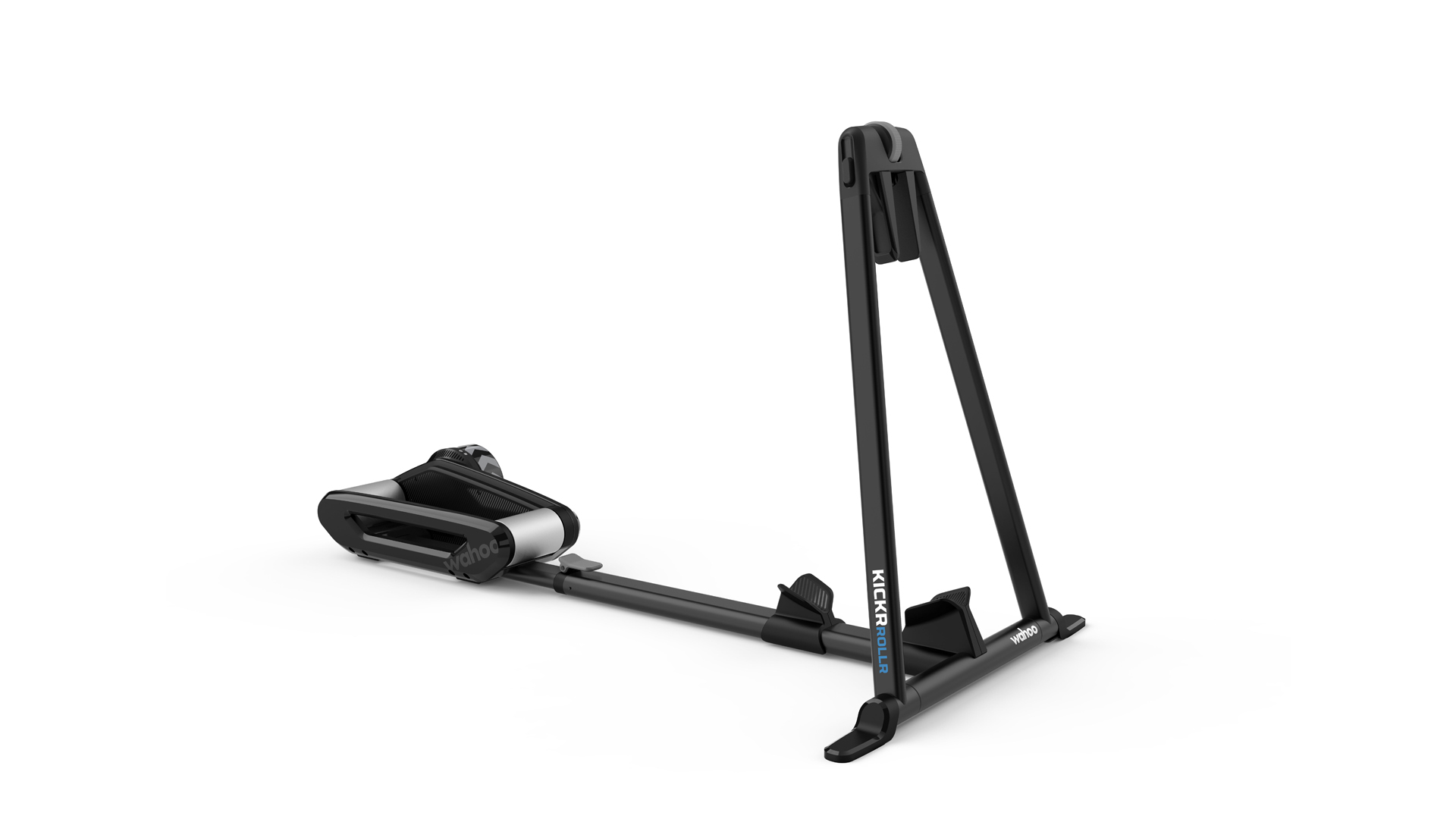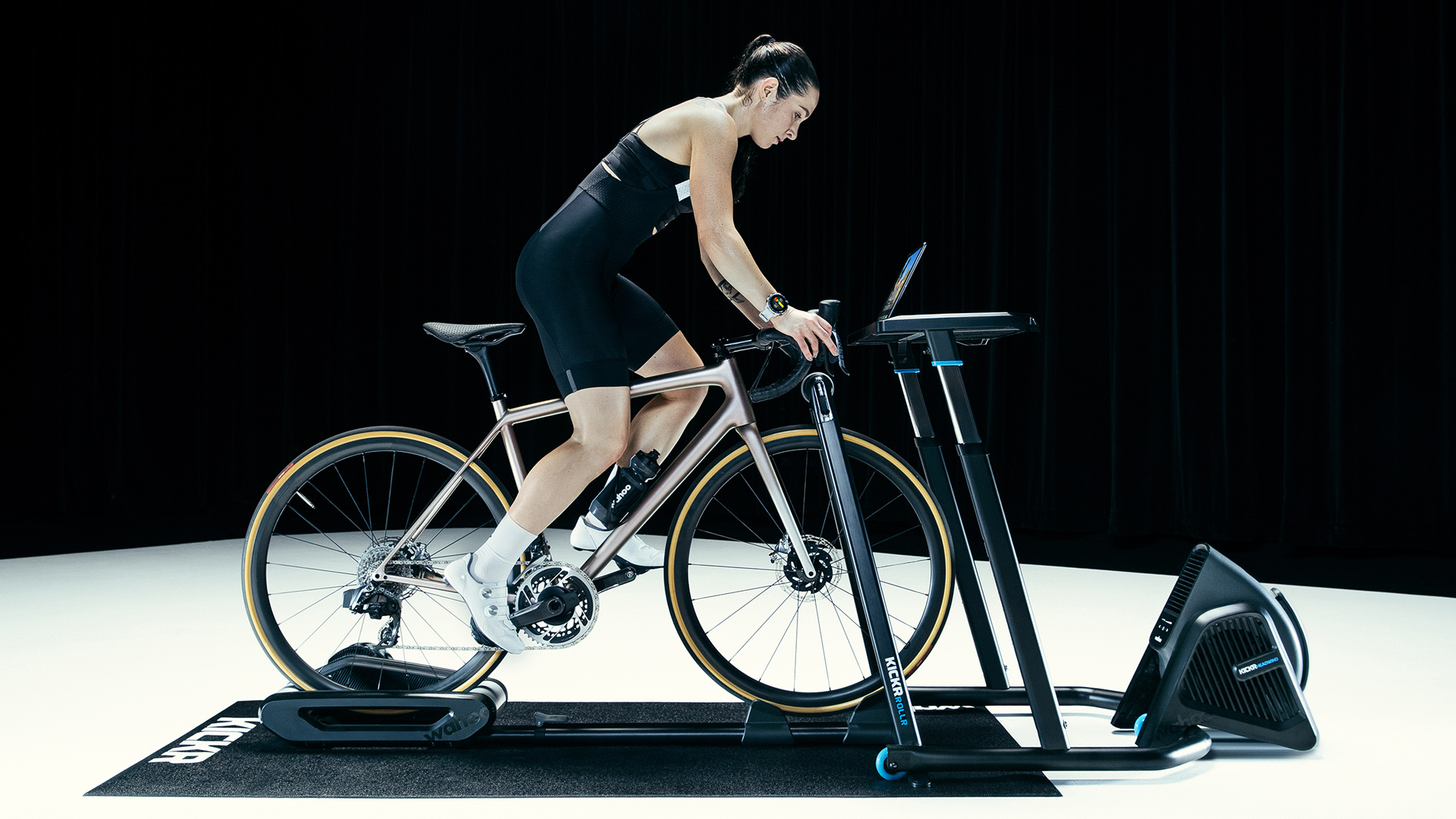Wahoo KICKR ROLLR review: a simple to use smart trainer which is ideal for multi-rider households
The KICKR ROLLR combines the functions of a smart trainer with the hop-on-hop-off convenience of rollers


For a multi-rider household, the Wahoo KICKR ROLLR could be the smart trainer to go for. Taking seconds to set up or switch bikes, this smart roller is perfect for the time-stretched cyclist. If you don’t already own a power meter though, it doesn’t come cheap.
-
+
Simple to set up
-
+
Easy to switch bikes making it handy for households with multiple riders/bikes
-
+
Good if you have a power meter already
-
+
Very stable
-
-
Expensive given you need a separate power meter
-
-
Doesn’t have the feel of traditional rollers
-
-
Doesn’t beat a smart trainer for e-racing
Why you can trust T3

Wahoo KICKR ROLLR review TL;DR: combining the functions of a smart turbo trainer with the hop-on-hop-off convenience of rollers, the new KICKR ROLLR is ideal for multi-rider households, but can come with a high price tag if you don’t already own power meter pedals.
The best turbo trainers have certainly seen huge demand over the last couple of years and indoor training has really gone up a level in terms of popularity and expectations. Indoor trainers have now come to be an essential piece of kit for some cyclists, as recent events made many of us spend more time at home. While the experience of cycling outdoors can’t be replaced, indoor trainers can be a savvy investment, especially for the fair-weather or time-constrained cyclist.
Already a huge player in the indoor training market, Wahoo have tapped further into this with the launch of the KICKR ROLLR and POWRLINK pedals. Combining a traditional roller design with turbo trainers, such as the Wahoo Kickr Snap, Wahoo have gone for a roller-turbo hybrid that allows riders to enjoy the free-flowing sensation of rollers while giving them the data-laden aspect of a smart trainer.
One thing is for certain, the KICKR ROLLR isn’t going to be for everyone. Some will love it, precisely for its pros (easy to switch bikes, simple to set up and fuss-free) but others will inevitably wonder if such a piece of equipment is needed when traditional smart trainers and humble rollers already tick those boxes.
Wahoo KICKR ROLLR review: Price and availability
The new Wahoo KICKR ROLLR is available to buy at Wahoo for a recommended retail price of $799.99 / £699.99 / AU$1,199.95 / €799.99. The power bundle: a KICKR ROLLR and POWRLINK ZERO single-sided pedals retails at $1399.99 / £1,199.99 / AU$2,049.95 / €1,399.99. Third-party retailers include Backcountry in the US, Chain Reaction Cycles and Wiggle in the UK and Pushys in Australia.
Wahoo also offers the only complete indoor riding ecosystem; KICKR is compatible with the KICKR HEADWIND Smart Fan and KICKR DESK, but not the KICKR CLIMB Indoor Grade Simulator.

Wahoo KICKR ROLLR review: Setup
Incredibly easy to set up, this is a real selling point of the Wahoo KICKR ROLLR. It arrives in two pieces: the dual-roller part and a front-wheel clamp. Simply pull it out of the box, insert the wheel clamp into the rear dual-roller section, tighten two screws and you’re ready to go.
Get all the latest news, reviews, deals and buying guides on gorgeous tech, home and active products from the T3 experts
The wheel clamp slides horizontally to fit your bike’s frame size and locks in place with a quick-release mechanism. There’s also a wheel on the clamp, which tightens on the front tyre and allows for fine control - handy for different tyre sizes. Wahoo says that the safety tyre gripper can hold up to a 2.1” (53mm) tyre.
A QR code in the instruction manual takes you to the Wahoo app, which you can use to pair the KICKR ROLLR. You can also pair it directly through other apps like Wahoo SYSTM, where you can design your own custom training plan, and Zwift, for workouts and races.
One of the best, and key, features of the ROLLR is the simplicity it affords when it comes to switching bikes. If you have multiple bikes or live in a household with other riders then you can swap them over in mere seconds, without any fuss or worry about changing cassettes or adapters. This is a clear advantage over a direct drive smart trainer, especially if you have bikes with different groupsets or a mix of QR and thru-axle.
The caveat though is that you either need a power meter on each bike or you’ll have to switch your power meter onto the bike you’re using on the ROLLR to make use of its smart features. Still, with the POWRLINK pedals, this is quite straightforward.

Wahoo KICKR ROLLR review: How it works
The Wahoo KICKR ROLLR is a smart trainer with a resistance unit controlled using a separate power meter. It provides power readings to within +/-1% accuracy of the power meter.
The model we tested came with Wahoo’s new POWRLINK single-sided power meter pedals, which are the first Speedplay compatible option on the market.
The ROLLR is different to a traditional roller because the front wheel is clamped, so any worries about balancing are eliminated. This makes the unit very stable during workouts and there is little chance of you flying off (we’ve all seen the roller mishap videos).
For those used to a traditional roller, this may feel unfamiliar and we actually felt the ROLLR performed more like a direct drive smart trainer. Because of the way the bike attaches, your lateral movement is translated to the front wheel, which is a little unsettling when mounting and dismounting or when putting the power down.
When getting out of the saddle the flex in the front wheel and fork is very evident. Although Wahoo claims the ROLLR is fine for out of the saddle sprints up to 1,500 watts, if you’re worried, we would recommend using a spare front wheel rather than your best deep-section carbon numbers.

Wahoo KICKR ROLLR review: Design
The design of the ROLLR is very much in line with the rest of the KICKR range. The resistance unit has a distinctive black and grey chevron pattern and the device has a stripped-down look.
The footprint of the unit is quite large and covers more area than a smart trainer. However, when not in use, the ROLLR folds flat to around 20 cm tall at its highest point (the resistance unit), so could fit under some sofas or a table. The unit can also be disassembled into two parts if space is at a premium.

Wahoo KICKR ROLLR review: Performance
We tried the ROLLR on a range of rides: a group ride on a rolling course on Zwift, plus some hard V02 max and sweet spot workouts in ERG mode on Zwift and TrainerRoad. For power measurement, we used the bundled Wahoo POWRLINK single-sided pedals.
On the group ride, gradient simulation was accurate and the ROLLR felt very similar to a direct drive turbo trainer from the KICKR range. This is not surprising as the flywheel the ROLLR uses is the same as that used in the KICKR Snap. It’s worth noting here though that the KICKR Snap is available for around the £400 mark and doesn’t require a power meter.
In the workouts, the ROLLR excelled, easily handling the high cadence and steady power efforts required in the V02 max intervals. However, one thing we noticed was that the resistance from the trainer lagged slightly, meaning the first few seconds of the interval were easier than they should have been. It’s also worth making sure that your bike fit and saddle are spot on as you’ll find yourself getting out of the saddle less than on a smart trainer.
We found the POWRLINK pedals to be accurate and reliable. Set-up is straightforward: once they are installed on the bike you simply connect to the Wahoo app to calibrate them and you're ready to go. Note that the calibration requires a couple of standing start sprints, but after that, it’s a one-click operation. This is similar to other power meter pedals such as the Favero Assioma.
Wahoo claims accuracy of +/-1% for the pedals, which is the same as the Assiomas and Garmin’s Rally pedals. Therefore, the choice comes down to your preferred cleat system. If you are a Speedplay fan, then you will have been waiting a long time for the POWRLINKs and they don’t disappoint. One thing to note, however, is that there isn’t currently an option to get dual-sided POWRLINK pedals in a bundle with the KICKR ROLLR, which may be an issue if left-right balance is important to you.

Wahoo KICKR ROLLR review: Verdict
Wahoo’s latest launch, the KICKR ROLLR, nails some fundamentals: it’s super easy to put together, straightforward to use and a dream for multi-rider households or those who hate the faff of putting a bike on and off a traditional smart trainer.
The riding is smooth, and of course, stability isn’t an issue. Well, that is unless you’re a fully-fledged turbo warrior who wants to smash their sprints. Despite Wahoo’s assurances, we still weren’t entirely confident putting in hard, out of the saddle sprints as it felt like the front wheel would take the full brunt of that, seeing as it’s the only fixed point on the trainer.
If you already have a power metre, then the Wahoo ROLLR KICKR presents a compelling option as an alternative to a direct drive trainer. If you don’t have power metre pedals, there are other, better value options, such as the Wahoo Kickr Core. The brand’s second-tier direct-drive smart trainer represents excellent value at the same price point as the ROLLR, with inbuilt power measurement and a heavier flywheel. Essentially it comes down to your preferences and needs.
As a product, the Wahoo ROLLR KICKR does what it advertises very well and can be a savvy option for multi-bike or multi-rider households. However, as underlined previously, if you need to buy a power metre, then the price point can sting.

Amy is a freelance journalist who writes for various publications, including The Guardian, National Geographic Traveller, Telegraph, The Evening Standard, The Independent, Refinery 29 and more. She loves travelling and cycling.